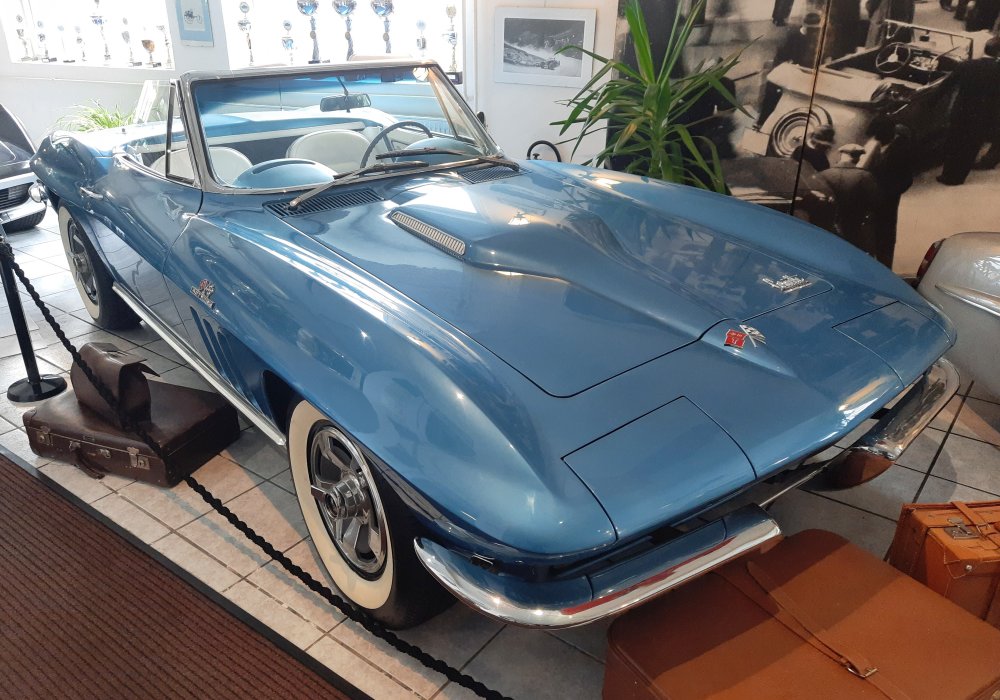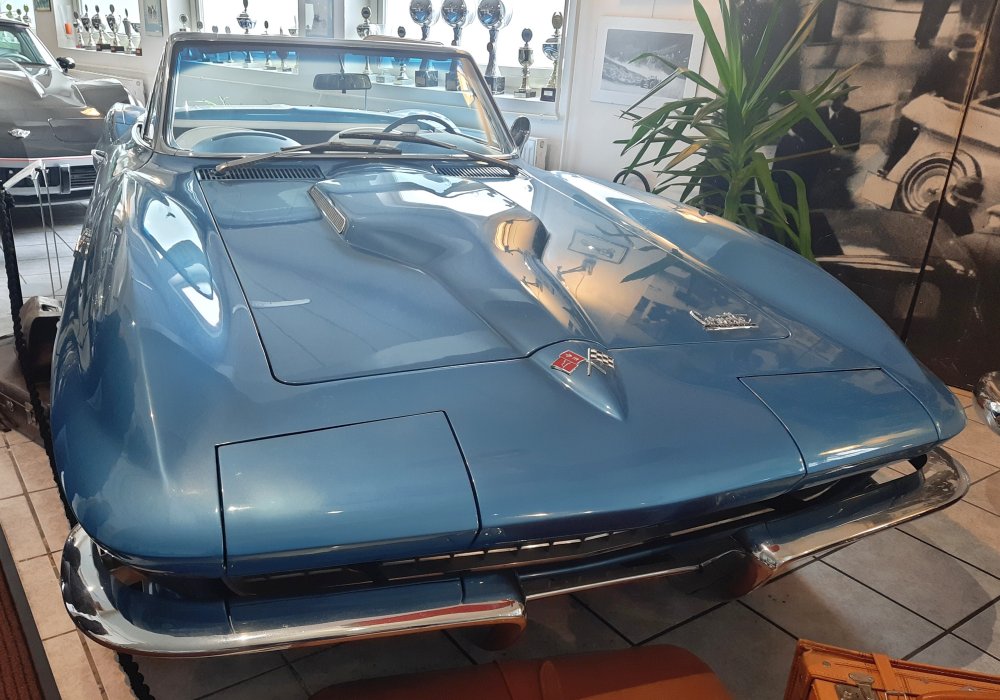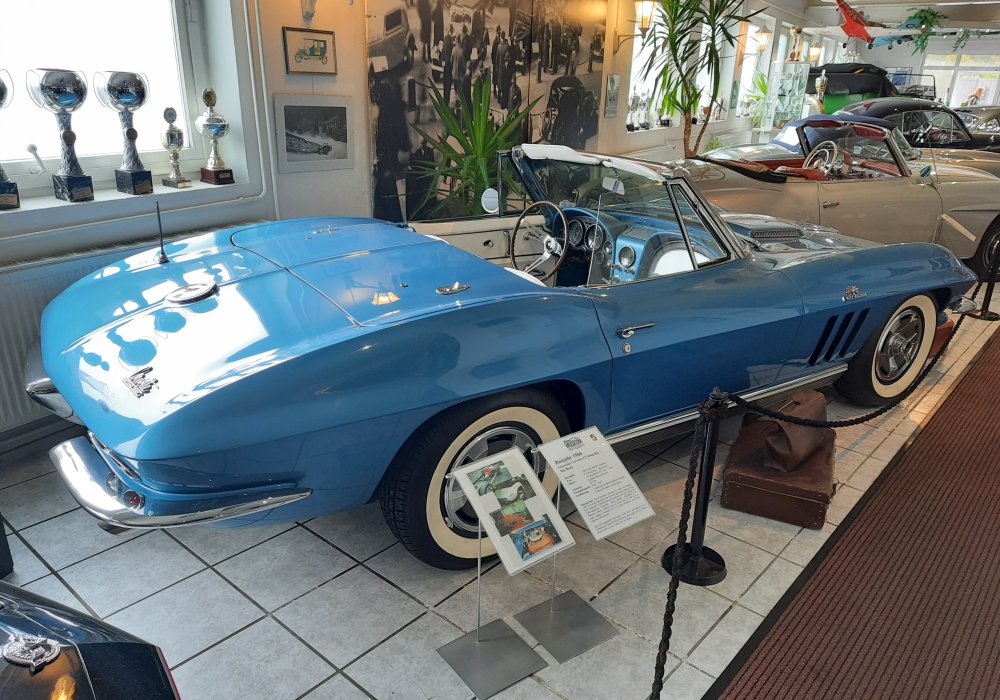Description
The 427-cubic-inch V8 rated at 425 horsepower was the flagship powerplant available in the final year of C2 Corvette production (1967), and in convertible form it represented the ultimate open-air expression of Sting Ray performance. Designated by Chevrolet as the L71 option, this engine used a pair of Rochester four-barrel carburetors, high-compression pistons (11.0:1), and a more aggressive camshaft profile to deliver its full 425 hp at 6,000 rpm. With 460 lb-ft of torque available down low, the 427/425 Convertible could rocket from 0–60 mph in well under six seconds—a blistering feat for its era—and push top speed past 150 mph when equipped with the close-ratio four-speed manual transmission.
Beneath the fiberglass body, chassis hardware was beefed up to handle the extra power. Standard equipment included heavy-duty front springs, larger sway bars, and upgraded rear leaf springs; the optional Z06 package added even stiffer components, larger-diameter fuel tanks, and front brake cooling ducts. Independent double-wishbone front suspension and a transverse leaf-spring rear arrangement were retained, but shock valving was firmed up and steering ratios quickened, giving the car surprising agility for its size and weight.
Visually, the 1967 Sting Ray Convertible carried over the refined C2 styling from 1965 and ’66, with its single-piece fastback roofline on coupes and a graceful rake on the convertible’s soft top. On L71 models, subtle “427” badges appeared in the side coves and on the glovebox door, while the pronounced hood bulge and sculpted cowl induction scoop hinted at the engine’s displacement. Satin-finish exhaust tips and optional chrome side-pipes added both aural drama and a touch of visual flair.
Inside, occupants were treated to a blend of performance-oriented features and growing comfort refinements. Deeply bolstered bucket seats were trimmed in vinyl or optional leather, and the twin-cowl dash housed a full complement of gauges—including an 8,000 rpm tachometer—for precise feedback. Options such as power steering, power brakes, air conditioning, and an AM/FM radio allowed owners to tailor their convertibles for weekend track days or long-distance cruising, while a removable hardtop remained available for improved weather protection.
Today, the 427/425 Sting Ray Convertible stands as one of the most desirable Corvettes of its era. Produced in very limited numbers—fewer than 300 examples are thought to have left the factory—it combines the raw drama of big-block power with the timeless appeal of open-top motoring. Meticulous restorations and concours-level examples command top dollar, and the L71 convertible remains a blue-chip collectible that epitomizes Chevrolet’s peak 1960s performance.


